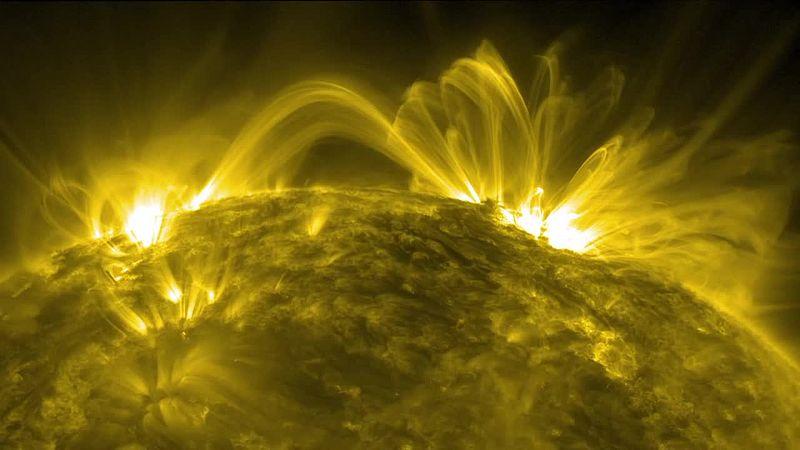Singular waves to heat the solar corona
Superoscillations, a surprising wave effect recently discovered in physics, could be one of the mechanisms responsible for dissipating waves in the solar corona and thus for coronal heating. Researchers at the Institut de recherche en astrophysique et planétologie of Toulouse (IRAP) showed in an article published in the journal Astronomy & Astrophysics that these superoscillations heat the coronal plasma well beyond losses during short periods of time and within small areas along the field lines: the description of high temperature coronal loops thus find a natural explanation.

How does a star, the Sun, with a surface temperature of about 6000K, heat the corona to temperatures 300 to 1000 times higher? It is the problem of coronal heating that has intrigued solar physicists for 50 years. The energy required for this heating is undoubtedly found in the movement of the photospheric plasma. To route it to the corona, the magnetic field serves as a guide. But once in the corona, how is this energy deposited? One possibility is that the magnetic field lines caused by photospheric movements may eventually cross in the corona. It is the phenomenon of magnetic reconnection that releases energy very efficiently. But although observed, this phenomenon is not present everytime nor everywhere. Another possibility would benefit from the waves that propagate along the field lines to the corona all the time and through the entire corona, but through what mechanisms do they dissipate?
The interest in waves that carry singularities of the phase, known as dislocations, has grown steadily since the discovery of light vortices in the 1990s. In the course of these optical discoveries, all kinds of dislocated waves were observed. Our team has seen and described them in the magnetoacoustic waves that propagate through the solar plasma. Recently, associated with these singularities, a very surprising property has also been discovered. These waves could oscillate locally faster than its highest frequency in the Fourier spectrum: this is called a super oscillation. First a mathematical surprise, these superoscillations begin to be observed and understood in the light or sound waves. Unsurprisingly, the magnetoacoustic waves of the solar atmosphere also show super oscillation phenomena.
In the presence of viscous phenomena, a wave dissipates and it does more efficiently at higher frequencies. Would this be the effective way to dissipate waves in the solar corona? That is what we have been trying to understand. The result is that superoscillations exist in the waves of the solar corona, the frequency increases locally by a factor of 10, and the periods go from characteristic 3 minutes to surprising 10 seconds. The dissipation explodes at these frequencies and the wave dissipates almost completely. The deposited energy then exceeds all the radiative and convective losses and the plasma temperature increases rapidly to a few million degrees.
However, this explosive heating only takes place in a very small area and for very short periods of time. The heat is then propagated along the field lines, resulting in a very narrow hot line that connects the active solar regions. Unexpectedly, we have here a description of the coronal loops, whose size still escapes other explanations (see image).
The amazing phenomenon of superoscillations associated with waves bearing a singularity could therefore be the mechanism that deposits the energy of magnetoacoustic waves in the solar corona.
IRAP Contact :
- Arturo Lopez Ariste, Chercheur CNRS, alopezariste@gmail.com






